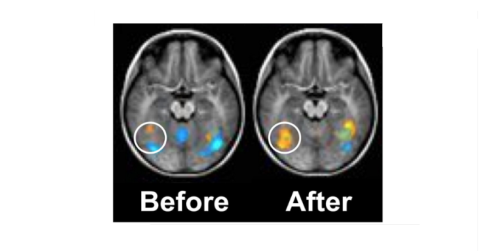There’s an old bumper sticker that says, “If you can read this, thank a teacher.” But for too many students–actually, too many Americans young and old–their teacher is a big reason why they struggle with reading. But it’s not the teacher’s fault–in too many cases the teacher was never shown how to teach reading properly.
On the 2015 NAEP, nearly a third of fourth graders (31 percent) scored below Basic, unable to locate information or identify details in a text. Only about a third (36 percent) of fourth graders score high enough that they demonstrate the ability to interpret texts.
Clearly, too many fourth graders are not learning how to read well, and studies found that students who are not reading by the fourth grade most likely will grow up to be essentially non-readers.
There’s no doubt that the primary reason for this problem is the instruction that’s not happening in schools, largely because so few elementary school teachers are themselves trained in the most effective methods for teaching reading. According to Professor Mark Seidenberg in Language at the Speed of Sight, “teachers are left to discover effective classroom practices [themselves] because they haven’t been taught them” (pg 255).
Neuroscientists, psychologists, and reading experts all agree on the methods that will result in the most children becoming successful readers. Even though the National Reading Panel established scientifically-supported reading methods in its 2000 research report, which has been affirmed most recently by the Institute of Education Sciences’ What Works Clearinghouse in 2016, most teacher preparation programs still are not teaching these methods.
Since NCTQ first examined this issue in 2006, the percentage of programs teaching these strategies has only climbed slightly, from 17 percent of our original sample to just 39 percent of the 820 undergraduate elementary programs examined in 2016.
The importance of this standard gains additional emphasis from our expert panels and school district superintendents, who agree that early reading is critical for elementary teachers. Moreover, the Common Core State Standards for early elementary grades, still used in 42 districts and D.C., aligned their standards with the findings of the National Reading Panel.
What are we looking for? Teachers need to know and practice how to provide explicit, systematic instruction in all five essential components of early reading instruction (phonemic awareness, phonics, fluency, vocabulary, and reading comprehension). By explicit and systematic instruction, we mean that teachers need to be shown how to use each strategy in the proper way; just mentioning to teacher candidates that there is such a thing as phonemic awareness is not sufficient. Nor is it enough to “embed” these components into an unstructured teaching method and say teachers will incorporate these strategies as they come up. Here is some information on what should be taught in the five components. We will devote a future Profile to how to teach reading through scientifically-proven practices.
Phonemic awareness: Phonemic awareness is the understanding that words are composed of sounds. Teachers show students how to hear the individual sounds in spoken words, identify the sounds in words, and manipulate these sounds (such as through rhymes). They can prepare students to learn to read by showing the sound combinations found in English. The National Reading Panel found phonemic awareness works best when teachers show students how to manipulate phonemes with letters, focus on just one or two types of phoneme manipulations at a time, and teach in small groups. This needs to be taught as part of an explicit plan leading to phonics.
Phonics: Phonics builds on phonemic awareness. Using phonics, teachers show students how to break down a word to connect the sounds in words to combinations of letters so they can read and spell words. Studies show systematic phonics can improve students’ ability to decode (sound out) and spell words, especially for those in kindergarten and first grade. Teachers should not just use phonics as a way to show students how to sound out words, but have a structured plan to teach the phonemes and the possible letter combinations for each.
Fluency: Reading fluency is the ability to read accurately, rapidly, and with expression so the reader can process and comprehend what has been read. Readers who lack fluency struggle so much with decoding that they cannot focus on the meaning. Teachers can help students build fluency through “guided repeated oral reading.”
Vocabulary: Vocabulary is the range of words a student understands. Students have both an oral vocabulary—words they understand when they hear them—and a print vocabulary. Teachers can show students how to use phonics to decode a word and, if it is in the student’s oral vocabulary, understand it. Readers who understand more words can read faster with greater understanding of the content. Instead of requiring students to memorize lists of words, teachers can build vocabulary by teaching vocabulary words as they appear in the student’s reading. Research shows the best instructional methods for increasing vocabulary depend on the reader’s age and ability.
Reading Comprehension: Reading comprehension is the process of determining the meaning of the text. This is an interactive process between the student and the written content. Students comprehend meaning more easily when they can link it to something they know. This is especially true of content not designed for the classroom that assumes the reader has a basic background in the content. Teachers can help students improve their comprehension by teaching reasoning techniques and systematic strategies to assist the recall of information, asking and answering questions about the text, and summarization. The National Reading Panel determined that the most promising strategies were: comprehension monitoring, cooperative learning, graphic and semantic organizers including story maps, question answering, question generation, and summarization (pp. 4-42). Teachers not only need to understand these various comprehension strategies, but also when and how to teach them.
When elementary teachers never learn these scientifically proven strategies for teaching reading, many of their students struggle with reading throughout their lives. According to the 2002 President’s Commission on Excellence in Special Education as many as two-fifths of the children in special education “are there because they weren’t taught to read.” Moreover, research has found that if teachers would use the above five research-backed approaches to teaching reading, the current rate of reading failure could drop from around 20 to 30 percent to just 2 to 10 percent. This shows the urgent need for teacher prep programs to incorporate these five components into their preparation for elementary school teachers.
More like this

Back to the basics to boost reading results: Q&A with TSU’s Dr. Jerri Haynes
Tennessee State University’s Dr. Jerri Haynes on how their college of education worked to ensure its teacher candidates were better prepared to teach elementary students how to read.

A moment for humility and a new path forward on reading
This moment in education requires leaders who will publicly position themselves as the best learners, not the best knowers.

Case closed
If a picture is worth a thousand words, I’m thinking that these two images should have long ago put an immediate end to any debate over what teachers need to know before being entrusted with teaching children to read.

